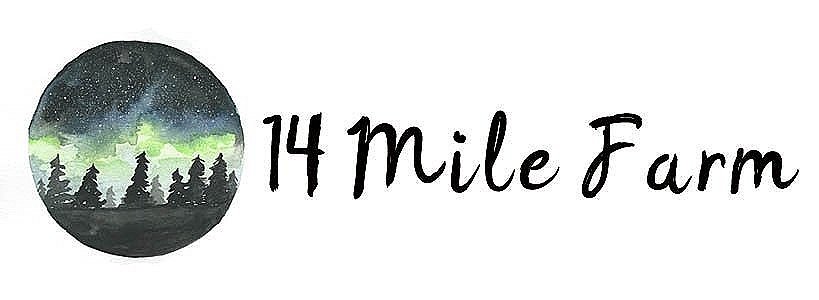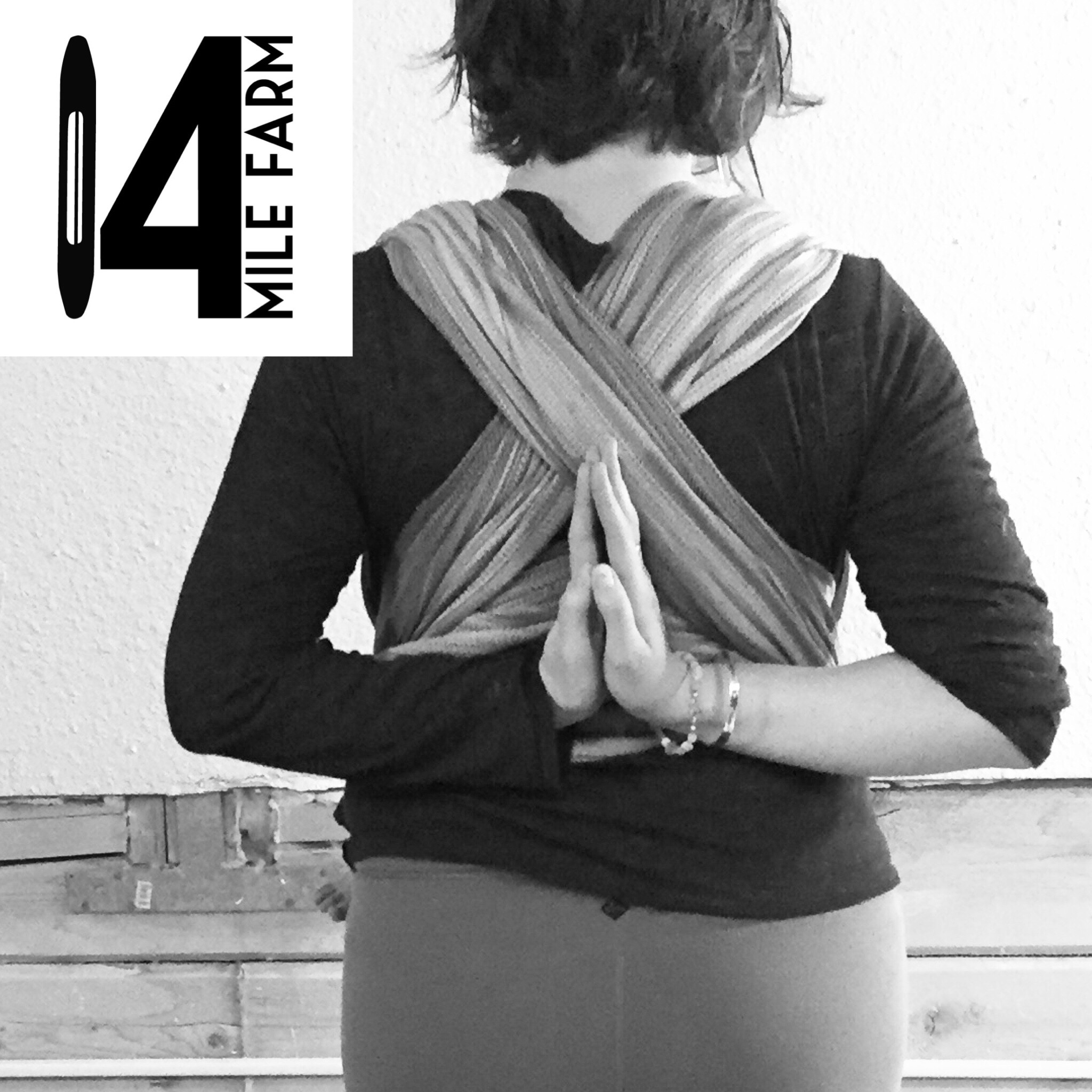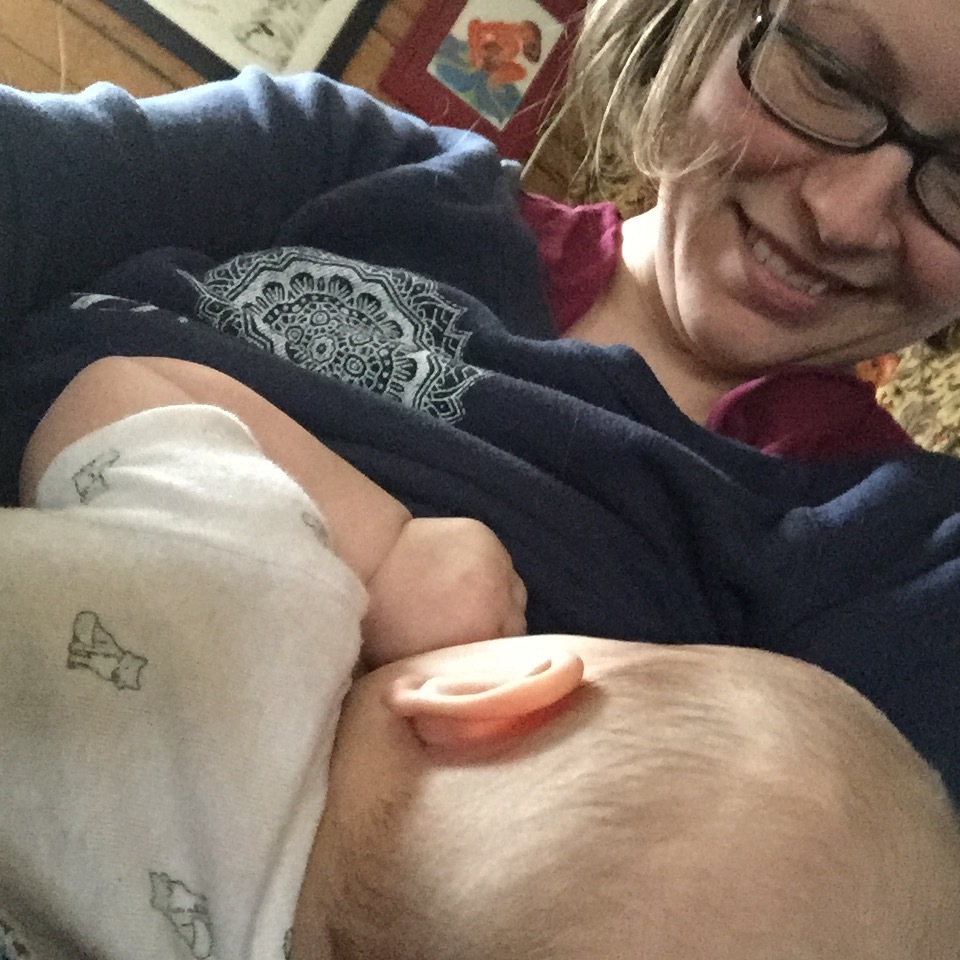Welcome! Please feel free to subscribe to the newsletter to get studio updates and projects from the archives straight to your inbox.
Babywearing Yoga
I recently participated in a babywearing yoga challenge on Instagram. It was a lot of fun, and I even experimented with making video tutorials for the poses which you can check out on the 14 Mile Farm Facebook page.
Babywearing Yoga makes for great selfies and lets face it, it is a real nice ego boost to look so bad-ass on your social media. If, like mine, your feed is filled with fellow yogis doing poses that are still inaccessible to you after a decade of practice and fellow mamas posting about their aspirational parenting in your Facebook mom's groups, it can feel good to post a bunch of babywearing yoga selfies. Or, oh my, does SSS (that's stash shot Saturday in the babywearing world) just make you droolingly envious and make you wish you had one meeeellllion dollars to spend on wraps? Babywearing yoga selfies are a feel good one-upsmanship.
All ego-boosting humor aside, babywearing yoga has a whole host of benefits to offer mama and baby. In addition to the closeness, the bonding, the healthy attachment that babywearing supports, doing yoga poses with baby models mindful movement. We know that a baby's neurology is a sponge: picking up on and learning from everything in their environment. Specifically, babies' mirror neurons learn from what is modeled via mimicry. When a caregiver's physiology falls into yogic patterns of deep, still, smooth breath, calm parasympathetic nervous system, and its calm steady heartbeat - baby learns from that. Many babywearing yoga poses also have specific benefits for the postpartum mother's body that we will get into with more detail below.
Warrior One is a great pose to start out with, the first time you step onto the mat with baby on your back. This is also a posture that's easy to do with baby in a front carry, belly to belly with mom. Its an easy one to ease into babywearing yoga with, because its easy to incorporate into a walk or a wrap nap, no mats required!
Always be aware of your balance when practicing asana with baby on board. Feel your center of gravity extending down through tailbone and rooting to the earth beneath you. Be sure to keep the front knee directly over the ankle and in line with the toes for optimal stability for both you and your joints!
Warrior One is pose of strength and stability, it asks you to ground into your connection with the Mother Earth. At about 6 weeks post partum you can begin to consciously work on strengthening and engaging the muscles of the pelvic floor and the deep core. This pose is great for this work as it engages the muscles of thighs and legs and brings them on board to support the work of the core.
Utkatasana, or fierce pose, is also often known as chair pose. It is another one that may be easily practiced with babe on front.
This pose is the perfect invitation to work on the pelvic floor and core muscles as you deepen the sitting action. Be sure to keep breath soft in the belly, and find a fixed point upon which to focus the eyes. This practice, combining endurance, challenge, commitment, as well as the conscious softness and ease of deep breath is in some ways the perfect microcosm of motherhood.
Vrksasana or Tree pose is one of my all time favorite yoga poses ever. And it just gets better with baby! Babe can be on front, belly-to-belly, or in a back carry. The key is to have babe's weight centered on your body. Hip carries might not be the best option for this pose.
Tree pose, as with all balancing postures, is a practice of moving towards center. It is not necessarily a practice of resting in perfect stillness. When you feel yourself leaning towards one side, correcting towards the other side and overshooting center, swaying in the posture; the body is learning. Core muscles, hip muscles, foot muscles, are all mapping gravity, learning how best to keep you and babe's hearts centered and upright.
Plank pose, or the top of a push-up, is a pose that I only reccomend to practice if you you are proficient and comfortable with back carries. Baby on your front is maybe not a great idea for this posture. It is however a GREAT posture to work on core strength and deep stabilizing muscles. ** Please note that it is always a great option to come down onto the knees for this posture. It is better to maintain posture (especially through the lower and mid-back) and challenge yourself where you are at than it is to push into postures that are not sustainable.
The key here is to keep shoulders and hips in line with one another. It is really really easy, especially with the added weight of baby, to let the base of the ribs drop towards the floor. Instead think about broadening through the kidneys and lengthening through the low back. Your body will arrange itself in two lines here, spine and legs with a hing between the two. It is NOT the goal to make one unbroken line from head to heels.
If you cannot easily and freely breathe in the pose, modify it by coming onto the knees and choose to challenge yourself instead by holding it for a longer period of time.
Cobra pose or Seal pose (a deeper back bend, pictured here) is another posture that is only really appropriate with back carries. If you wear babe on the front, Camel pose (ustrasana) is a great alternative.
Practicing this pose properly and effectively requires active engagement of the core muscles. A supple pelvic floor and soft shoulders will also aid you.
Start with the entire front of the body on the floor. Hands are under shoulders, tops of feet, toes, tops of thighs and fronts of hips press downwards into the mat. Imagine the tailbone extending towards the heels. Let shoulder blades be soft underneath baby, behind the heart. Then using the hands as support, peel the torso off of the floor any amount. Hold the backbend for a breath or two or 5, and then slowly lower yourself back down.
Malasana, or Garland pose, is a deep squat that is hugely nourishing to the pelvic floor, perineal tissues and the digestive system. Feet and knees are slightly wider than the hips here, allowing the hips to sink between the knees. They can face in any direction that is comfortable so long as the knees and toes are pointing in the same direction. You'll notice that in the picture my feet are flat against the floor. If your heels do not comfortable rest against the floor simply tuck a rolled blanket or yoga mat underneath the heels so that the entire sole of the foot is able to active press into the ground. This allows the muscles of legs, hips and core to work optimally in the posture. This is another great one for exploring your center of gravity as you invite the tailbone to reach ground-wards and invite the spine to stack and elongate.
Did you know that children, babies especially, mirror the physiological state of their caregivers? This is actually true of adults and is a human neuro-physiological trait that therapists use to facilitate the healing work they do. When momma is stressed and freaking out, baby will not only pick up on that, but her heart will begin to mirror momma's increased heartbeat, baby's breath with mirror momma's becoming shallow. Likewise, we can use our physiological state - deep calm breaths for instance - to help calm a fussy child.
Yoga breath work is a great way to being to train our neurology and our physiology to settle into soothing state of deep calm and rest. When the body is familiar with a deep and easeful pattern of breath, it is a skillful tool that is more readily accessible in moments of stress - such as a tantruming child. Practicing breath work, therefore, is preparatory work for a gentle parenting approach.
Deep diaphragmatic breaths are perhaps the simplest yoga breath practice to begin with. My favorite however is Nadi Shodana (pictured), an alternate nostril breathing practice which balances the nervous system, calms mind and body, and nourishes the spirit.
More than all the world
This morning, cuddled up with my babe, gazing down into her cooing smiling face I told her "I love you more than all the world."
In that moment of hearing the words come out of my mouth I realized it wasn't true. The sentiment behind the words burns fiercely in my heart, make no mistake. I love her just as much as I ever dreamed I was capable of loving. And then some.
But this morning I paused. I looked into her wide eyes with the impossibly lush lashes she did not inherit from my genetics, and I told her that it wasn't true. I told her that mama loves her just as she loves all the world. I told her mama loves her to the moon and back, loves her the distance between every star and back. But she is OF this world, and in that moment this morning, I realized with startling clarity that I cannot love her more than that which she is.
This Earth that we live on is a part of us. We are a part of her. The interconnectedness of this web of matter and energy and will and volition is impossibly deep. We speak the deepest of truths when we say "Mother Earth."
“Lokah samastah sukhino bhavantu
-may all beings experience happiness and freedom, and may I contribute in some small part to that happiness and freedom-”
As mothers we are granted visceral access to that space within the human being that has the capacity for unconditional love. It is like a spiritual fast track (advance to go, collect two hundred dollars). Our eyes are primed to see this one small piece of the universe as utterly precious.
As women, whether we choose to bear a child in our womb in this lifetime or not, we contain within us the ability to create new life. To nurture that new life. And to love it unconditionally.
It is our job - our duty, our dharma - to use that gift of perspective, that gift of capacity, that gifted wellspring of unconditional love to encompass all the world. This is how we heal the world.
If we as humans cannot heal from a place of fear - and we cannot; fear stimulates the sympathetic nervous response and its cascade of stress hormones, the physiologic antithesis of the healing process - how can we expect to heal the world from a place of fear? How can we expect to heal the political and personal divides and ailments that fill the news with stories of carnage and heartbreak and horror from a place of fear? How can we expect to heal the imbalances in our climate, halt and heal the destruction of ecosystems and species from a place of fear? Of hopelessness and dread? We cannot. We can only hope to heal the world from a place of love.
As mothers, nay as humans, we bear the sacred capacity to love.
Unconditional love. Love that is without conditions. What would that look like in our world? On a large scale? What - truly - would you see if you were to look at your neighbor, your elected officials, your in-laws, the cashier at the grocery store through the lens of unconditional love? Let's get radical for a moment. What would happen if we saw the refugees flooding Europe with unconditional love? What would happen if we saw the jihadists and terrorists through eyes that love unconditionally? What about the black men and boys that disproportionately fill our prison systems? The welfare mother? The indigenous peoples the world over whose lands are being bulldozed and drilled in the name of progress?
And what would happen if we - globally as humans, locally as people, intimately as women and men - acted from that place of unconditional love?
This is the revolution I would like to see. This is how we heal what is broken and hurting in the world. It is as simple as seeing the ills in our world as tears on the cheeks of an infinitely precious child.
We had this discussion this morning, my daughter and I. Deep spiritual philosophy. She laughed and reached to pull the glasses off my face. Clear vision, indeed. "I love you as I love the world."





























